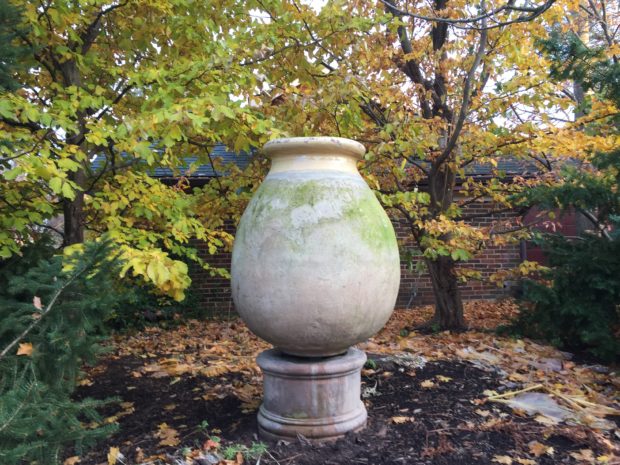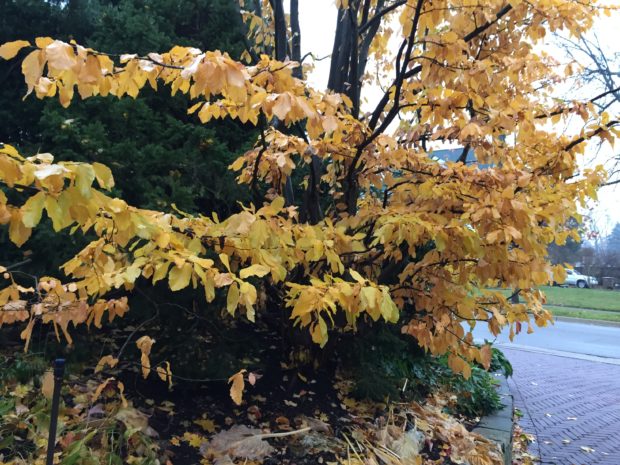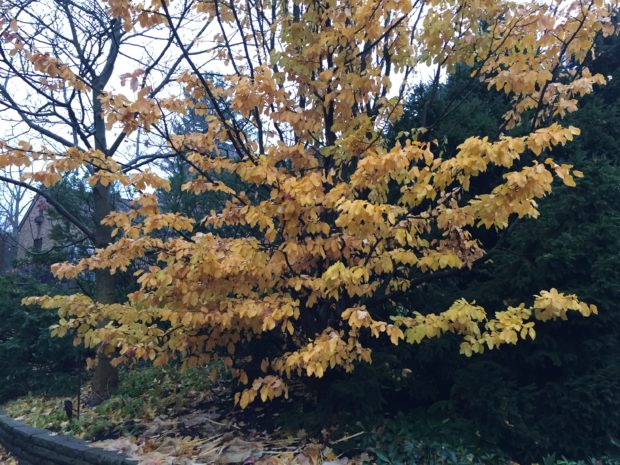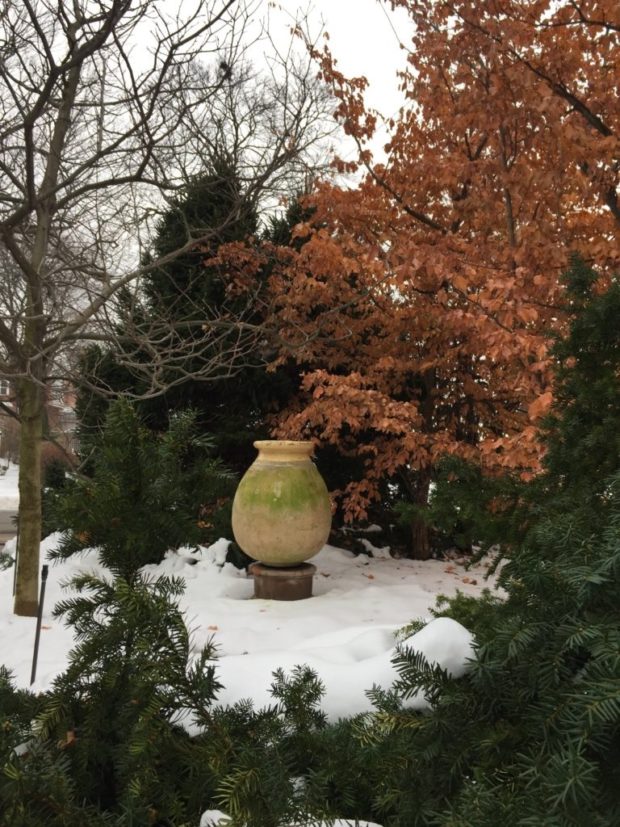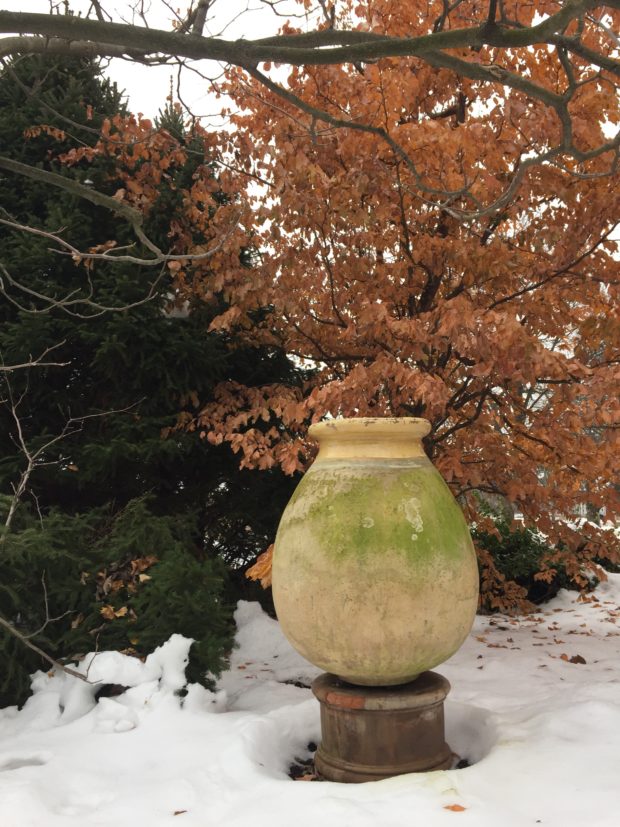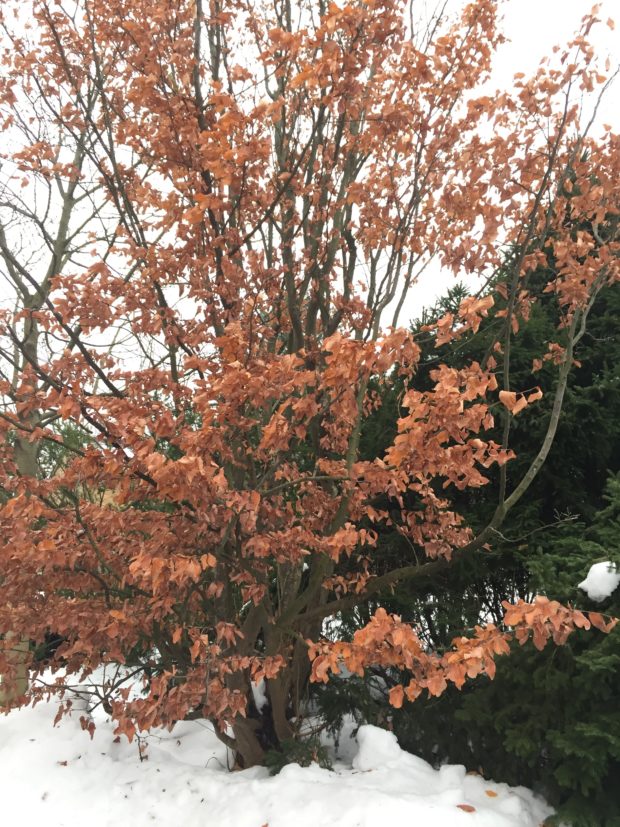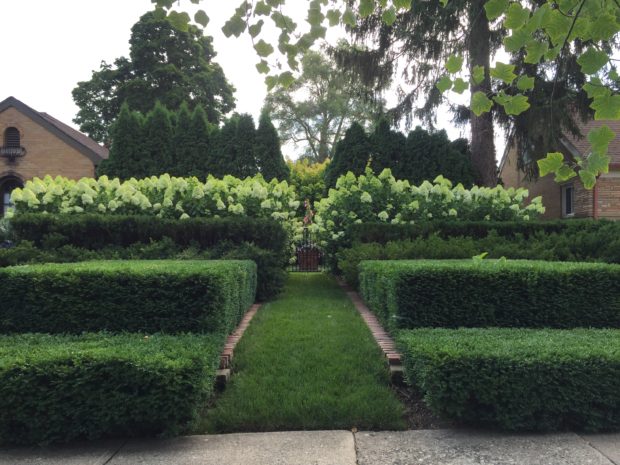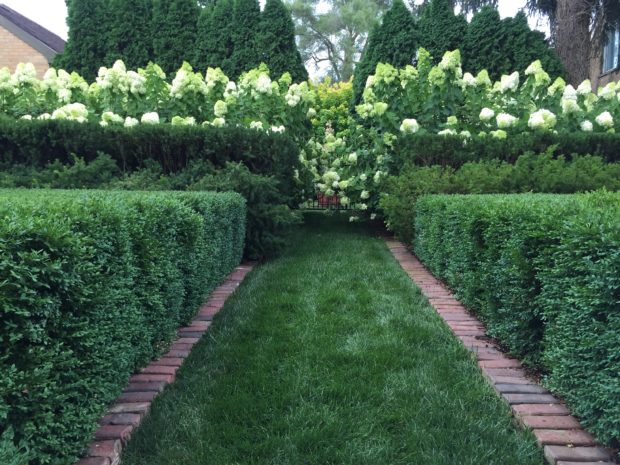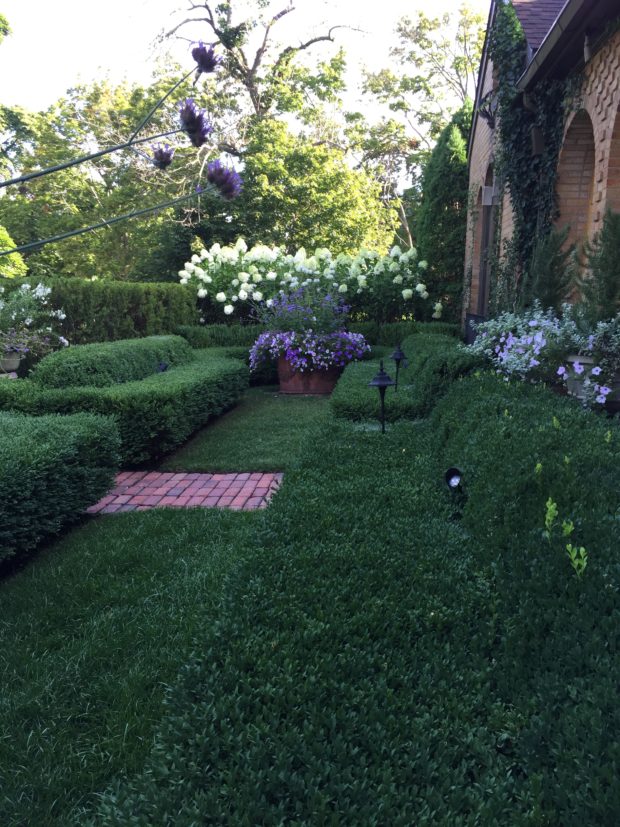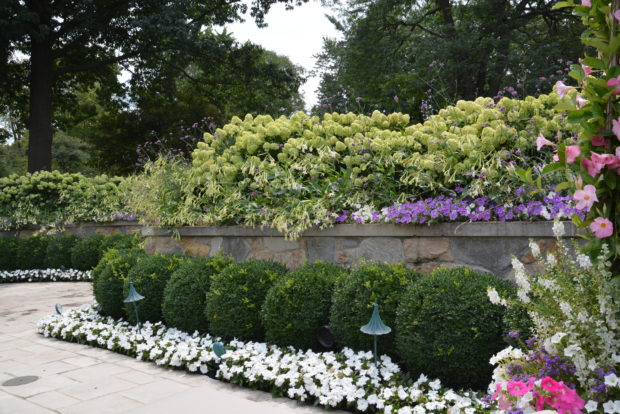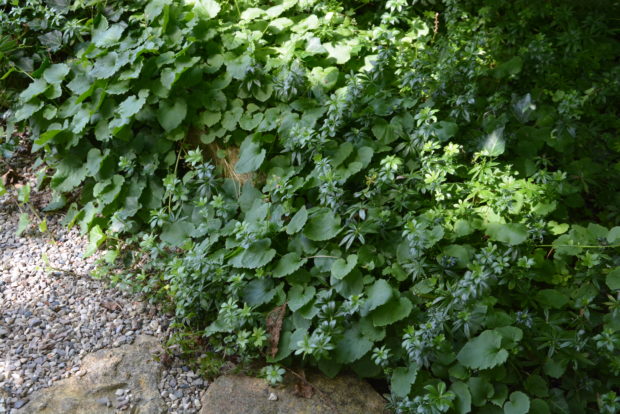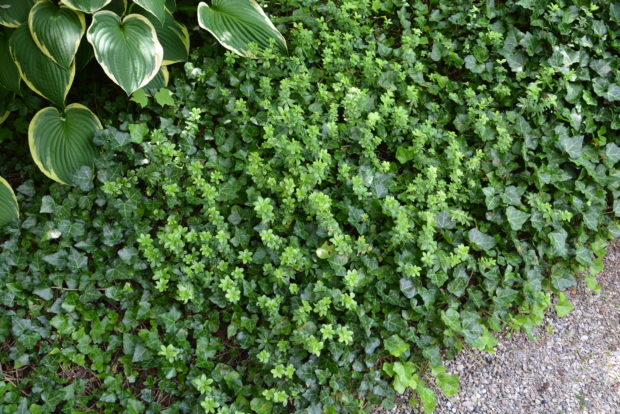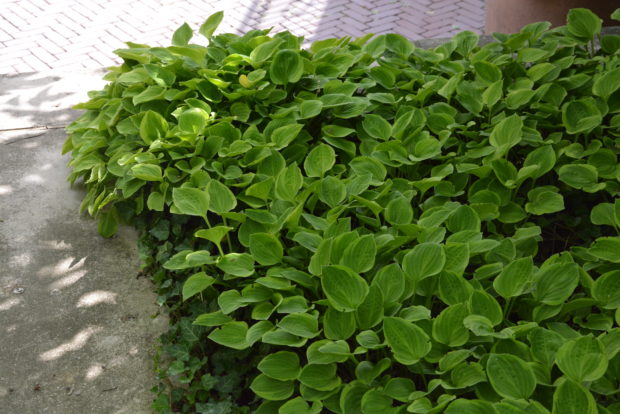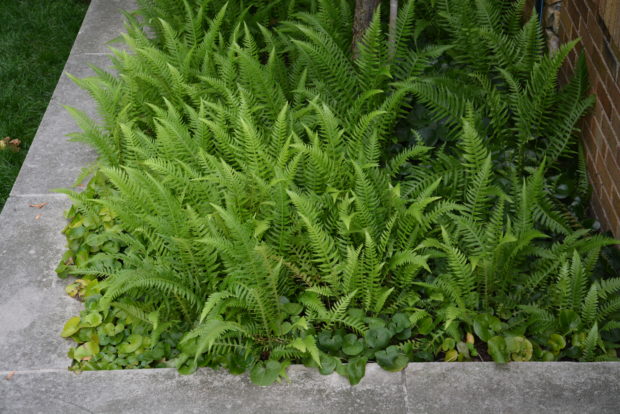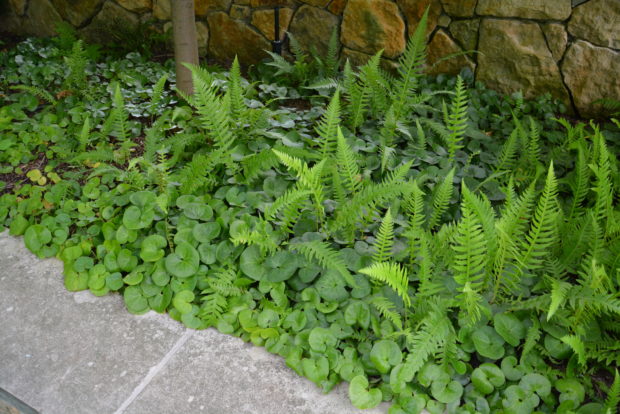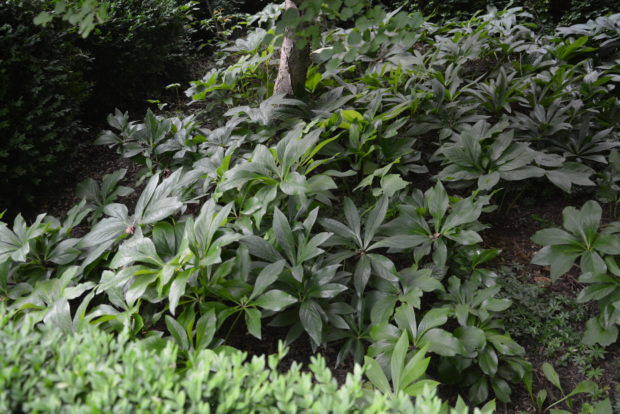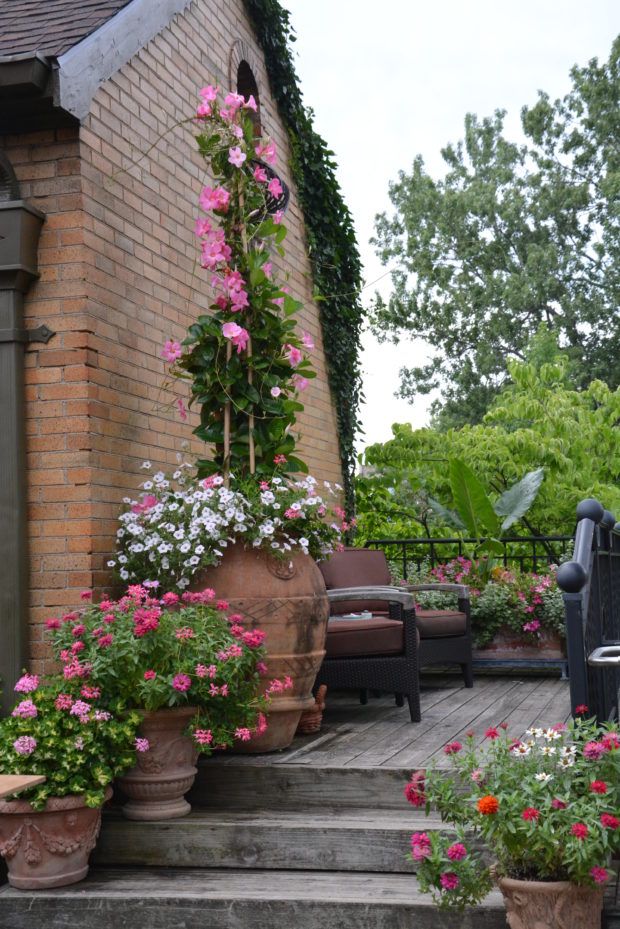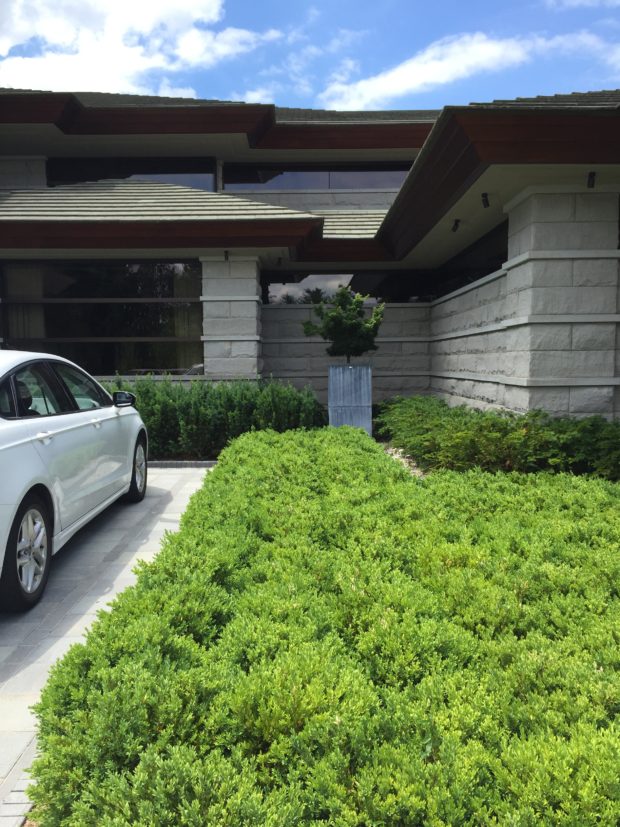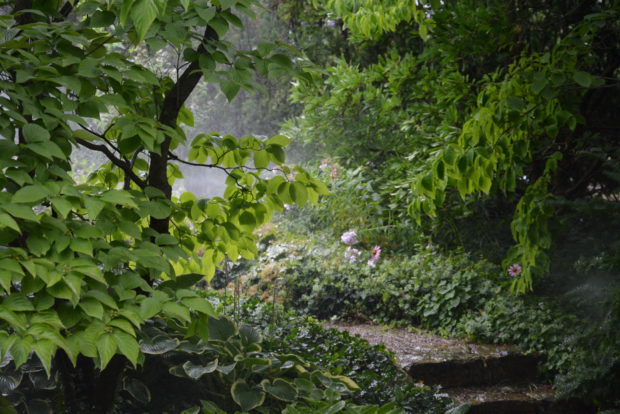 The role played by evergreens in the landscape could hardly be overstated in northern climates. The deciduous plant material in my landscape will finish their annual shedding come the end of October or the beginning of November. It will be another 6 months before I lay eyes on an emerging leaf. That is a long time to do without any green. Many evergreens have needles in lieu of leaves. A green needle presents a very small surface area to the extreme cold and desiccating winds that are common in our winters. Water evaporates from a needle at a much smaller rate than it does from a leaf. That size restraint nature bestowed on the chlorophyll producing needles of evergreens means they are able to survive the winter in spite of the fact that their roots are frozen, and unable to take up water or nutrients. An evergreen hardy in my zone is engineered to endure. This is not to say that evergreen needles cannot burned by extreme cold and wind-they can. But in a reasonable winter, the green will endure. Leaves, whether they be from perennials, shrubs or trees, are not engineered to survive our winters. Thus the mechanism that we know as fall causes plants to shed their leaves ahead of the deep freeze. Though an evergreen is dormant in the winter, they are able to sustain their green. That green is much darker, more somber and entirely fitting for a winter season. In looking at the above picture, I notice two things. My eye does not focus on the winter branches of the neighborhood maples. What I see first is the green. Secondly, I realize I may have devoted too much space to an evergreen presence in my landscape. I have my reasons.
The role played by evergreens in the landscape could hardly be overstated in northern climates. The deciduous plant material in my landscape will finish their annual shedding come the end of October or the beginning of November. It will be another 6 months before I lay eyes on an emerging leaf. That is a long time to do without any green. Many evergreens have needles in lieu of leaves. A green needle presents a very small surface area to the extreme cold and desiccating winds that are common in our winters. Water evaporates from a needle at a much smaller rate than it does from a leaf. That size restraint nature bestowed on the chlorophyll producing needles of evergreens means they are able to survive the winter in spite of the fact that their roots are frozen, and unable to take up water or nutrients. An evergreen hardy in my zone is engineered to endure. This is not to say that evergreen needles cannot burned by extreme cold and wind-they can. But in a reasonable winter, the green will endure. Leaves, whether they be from perennials, shrubs or trees, are not engineered to survive our winters. Thus the mechanism that we know as fall causes plants to shed their leaves ahead of the deep freeze. Though an evergreen is dormant in the winter, they are able to sustain their green. That green is much darker, more somber and entirely fitting for a winter season. In looking at the above picture, I notice two things. My eye does not focus on the winter branches of the neighborhood maples. What I see first is the green. Secondly, I realize I may have devoted too much space to an evergreen presence in my landscape. I have my reasons.
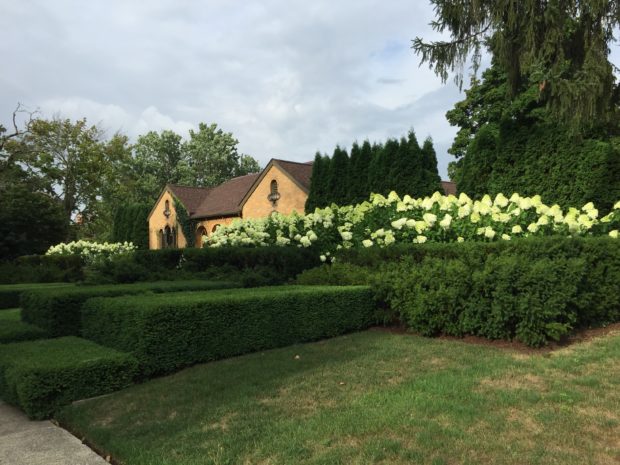 The time I have available to tend to my landscape is limited. I like to come home to a good look, not a a lot of work to be done on top of the workday I have already worked. This need for an orderly and low maintenance landscape is particular to me. What any gardener needs from a landscape and garden is particular to them, and the zone where they garden. My evergreens represent beautifully to my eye no matter the season, and no matter the weather. A landscape featuring trees and shrubs is a landscape that looks well kept, and can be kept well kept with a minimum amount of work, all year round. This picture taken in late summer illustrates how evergreens can provide structure to a landscape. Structure? The composition and form of my landscape is established by the evergreens. My Limelight hydrangeas break bud in April, and by the beginning of August their flowers are the star of the show. But the evergreens provide a foreground element, and a background element that enhances that look. The Hicks and densiformis yews disguise the woody green leaved legs of those hydrangeas. The arborvitae behind them provide a dark green backdrop that makes those greenish white blooms all the more striking.
The time I have available to tend to my landscape is limited. I like to come home to a good look, not a a lot of work to be done on top of the workday I have already worked. This need for an orderly and low maintenance landscape is particular to me. What any gardener needs from a landscape and garden is particular to them, and the zone where they garden. My evergreens represent beautifully to my eye no matter the season, and no matter the weather. A landscape featuring trees and shrubs is a landscape that looks well kept, and can be kept well kept with a minimum amount of work, all year round. This picture taken in late summer illustrates how evergreens can provide structure to a landscape. Structure? The composition and form of my landscape is established by the evergreens. My Limelight hydrangeas break bud in April, and by the beginning of August their flowers are the star of the show. But the evergreens provide a foreground element, and a background element that enhances that look. The Hicks and densiformis yews disguise the woody green leaved legs of those hydrangeas. The arborvitae behind them provide a dark green backdrop that makes those greenish white blooms all the more striking.
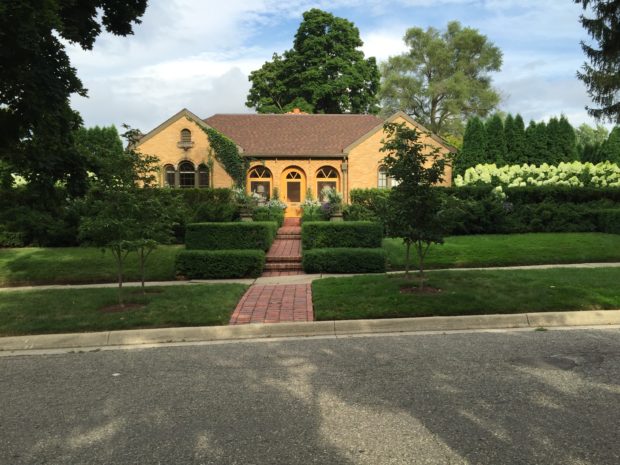 I am appreciative of all the evergreens have to offer in season. They are obligingly green as can be. Evergreens are densely foliated and lush. They do an excellent job of screening an untoward view, or creating shapes of all kinds planted en mass. This spring I did no pruning whatsoever to them. The boxwood were pruned in late June of 2015, after the spring flush of grown. The spring growth in 2016 was relatively uniform, so I skipped pruning them. A year off the shears never hurt a plant or a gardener. The arborvitae should be pruned. A severe ice storm could prove damaging. Keeping them at a shorter and uniform height takes advantage of the strength inherent in a group. Some individual trees that seem wobbly are already kept in line by strapping their trunks in several places to the trunks of their neighbors with arborist’s tree tie webbing.
I am appreciative of all the evergreens have to offer in season. They are obligingly green as can be. Evergreens are densely foliated and lush. They do an excellent job of screening an untoward view, or creating shapes of all kinds planted en mass. This spring I did no pruning whatsoever to them. The boxwood were pruned in late June of 2015, after the spring flush of grown. The spring growth in 2016 was relatively uniform, so I skipped pruning them. A year off the shears never hurt a plant or a gardener. The arborvitae should be pruned. A severe ice storm could prove damaging. Keeping them at a shorter and uniform height takes advantage of the strength inherent in a group. Some individual trees that seem wobbly are already kept in line by strapping their trunks in several places to the trunks of their neighbors with arborist’s tree tie webbing.
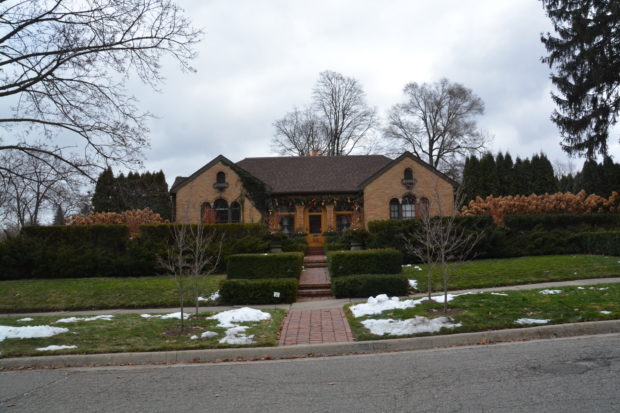 But the time of year that I am most happy for my evergreens is the winter. That green in the off season is a pleasure and a comfort. They provide a visual sense of warmth and enclosure during a very cold and inhospitable time of year. The mature flower heads of the mass of the deciduous hydrangeas do add color and volume to the winter garden, no doubt. The evergreens not only provide green in the off season, they screen the view of the bare branches of the hydrangeas from the street view.
But the time of year that I am most happy for my evergreens is the winter. That green in the off season is a pleasure and a comfort. They provide a visual sense of warmth and enclosure during a very cold and inhospitable time of year. The mature flower heads of the mass of the deciduous hydrangeas do add color and volume to the winter garden, no doubt. The evergreens not only provide green in the off season, they screen the view of the bare branches of the hydrangeas from the street view.
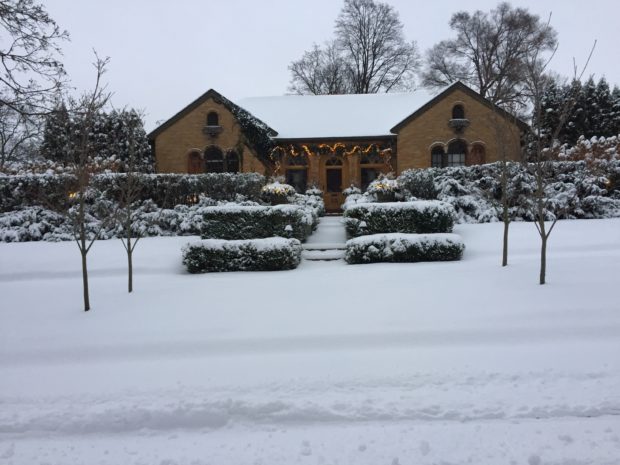 The snow we had last week was friendly to my landscape, in that the design and form established by the evergreens is still evident. Snow falling on an established structure of a variety of evergreens can be beautiful.
The snow we had last week was friendly to my landscape, in that the design and form established by the evergreens is still evident. Snow falling on an established structure of a variety of evergreens can be beautiful.
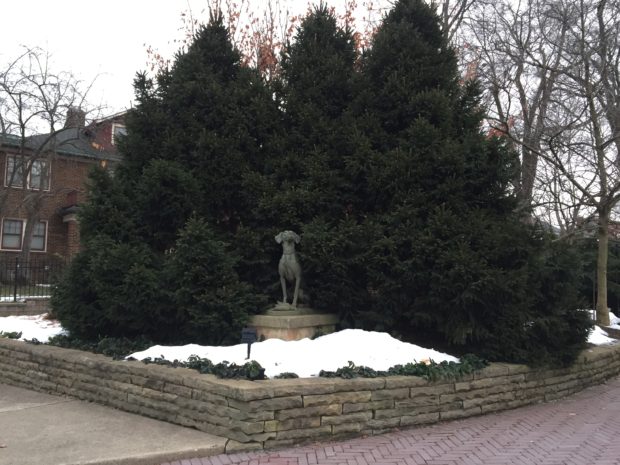 Four picea abies mucronata were in the front of the house when I bought it 20 years ago. They were about 4 feet tall when I transplanted them to the driveway side. That was the last time I did anything to them, except look at them. I do not need to weed, nor do I feed them. I do water the hellebores in front of them when they need it. The needles go quite black green in winter.
Four picea abies mucronata were in the front of the house when I bought it 20 years ago. They were about 4 feet tall when I transplanted them to the driveway side. That was the last time I did anything to them, except look at them. I do not need to weed, nor do I feed them. I do water the hellebores in front of them when they need it. The needles go quite black green in winter.
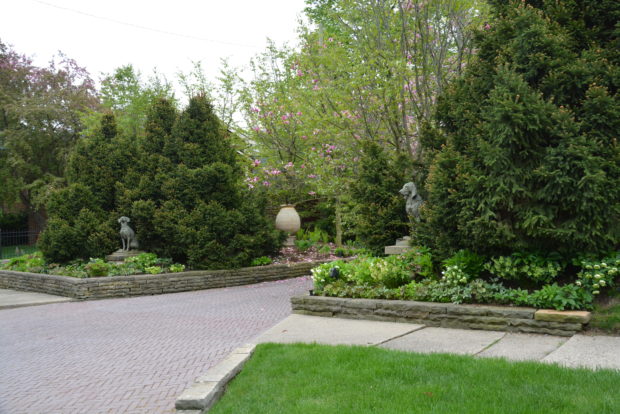 In the spring, the new growth is chartreuse. My hellebores stay green most of the winter, although 4 ” of snow will completely cover them.
In the spring, the new growth is chartreuse. My hellebores stay green most of the winter, although 4 ” of snow will completely cover them.
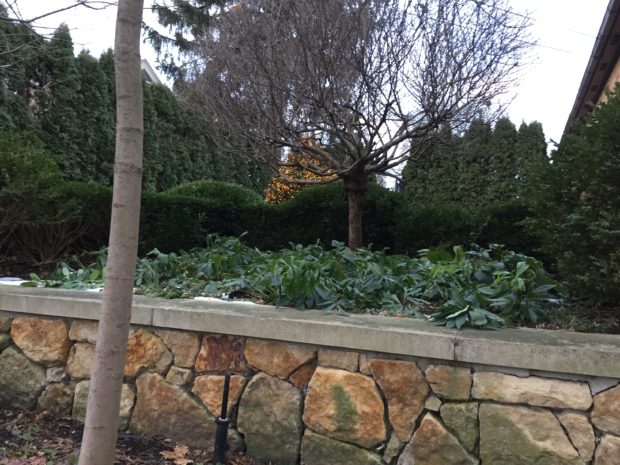 We rarely have snow cover that comes in early January and persists until March. We have no snow on the ground now. This is the third winter for this new batch of hellebores. As they were 4″ pots when I planted them, I think it is safe to say they are happy here. I am happy to have this evergreen groundcover patch to look at.
We rarely have snow cover that comes in early January and persists until March. We have no snow on the ground now. This is the third winter for this new batch of hellebores. As they were 4″ pots when I planted them, I think it is safe to say they are happy here. I am happy to have this evergreen groundcover patch to look at.
 This spreading yew was big when I bought the house. I would guess it has been there over 30 years. It is a great example of how evergreens can be used in an informal setting to great effect. Buck occasionally complains that it has encroached on the driveway, but I rather like how it has softened the look of the stone and concrete brick drive. The bare patch of snow and dirt to the left? It is ferns and hostas in the summer. That spot will be bare until May.
This spreading yew was big when I bought the house. I would guess it has been there over 30 years. It is a great example of how evergreens can be used in an informal setting to great effect. Buck occasionally complains that it has encroached on the driveway, but I rather like how it has softened the look of the stone and concrete brick drive. The bare patch of snow and dirt to the left? It is ferns and hostas in the summer. That spot will be bare until May.
 Boxwood are broad leaved evergreens. They can be more susceptible to winter burn than needled evergreens, as those leaves have a big surface area through which water inside the leaf is constantly transpiring, or evaporating to the atmosphere. The most effective way I know to limit damage from winter burn is to spray them with a commercial grade antidessicant. I use Vapor Gard. This water based wax is made from pine resin. The wax coats the leaves, and helps prevent moisture loss. I find it to be much more effective and much less unsightly than burlap. That said, in our truly terrible winter 3 years ago, I did have patches where the boxwood died back, leaves and stems. The plants have begun to grow out of this. I do nothing to protect my boxwood, as they are all growing in fairly sheltered places. In January, they have a much stronger visual presence than my deciduous trees.
Boxwood are broad leaved evergreens. They can be more susceptible to winter burn than needled evergreens, as those leaves have a big surface area through which water inside the leaf is constantly transpiring, or evaporating to the atmosphere. The most effective way I know to limit damage from winter burn is to spray them with a commercial grade antidessicant. I use Vapor Gard. This water based wax is made from pine resin. The wax coats the leaves, and helps prevent moisture loss. I find it to be much more effective and much less unsightly than burlap. That said, in our truly terrible winter 3 years ago, I did have patches where the boxwood died back, leaves and stems. The plants have begun to grow out of this. I do nothing to protect my boxwood, as they are all growing in fairly sheltered places. In January, they have a much stronger visual presence than my deciduous trees.
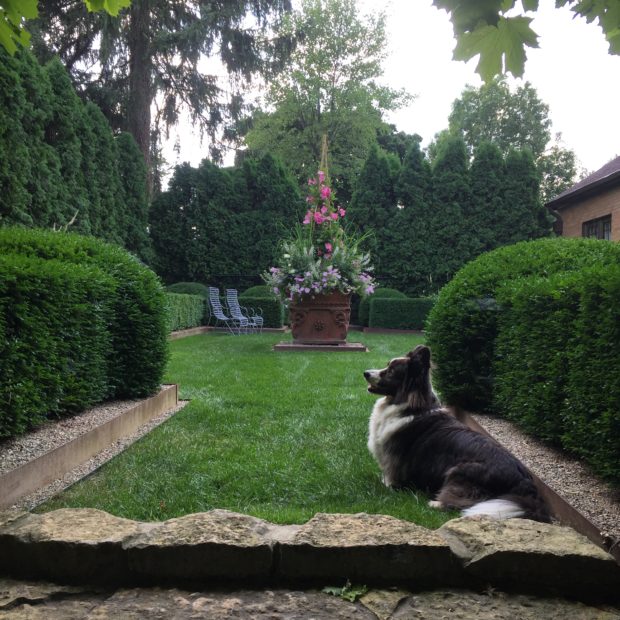 No doubt the green of the boxwood in summer is vibrant. Live green, I call it.
No doubt the green of the boxwood in summer is vibrant. Live green, I call it.
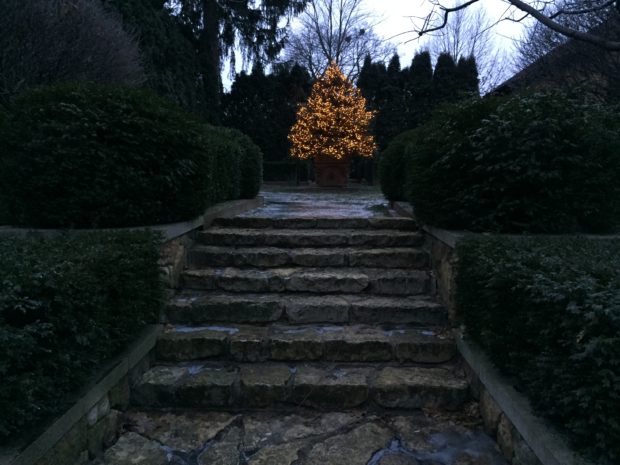 The dormant green is not as showy, but it is green nonetheless. The texture and shape stay the same throughout the seasons. What the weather of each season does to the evergreens is my greatest source of pleasure in my own landscape.
The dormant green is not as showy, but it is green nonetheless. The texture and shape stay the same throughout the seasons. What the weather of each season does to the evergreens is my greatest source of pleasure in my own landscape.
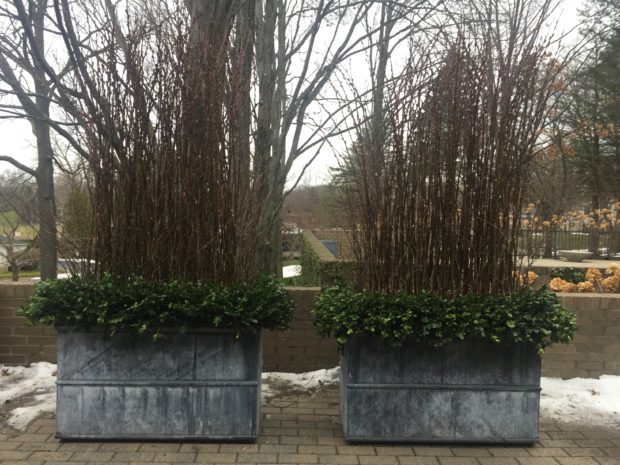 This is surely why most all of our winter containers feature cut evergreens. Even the trimmings will stay green all winter. Amazing, that.
This is surely why most all of our winter containers feature cut evergreens. Even the trimmings will stay green all winter. Amazing, that.
